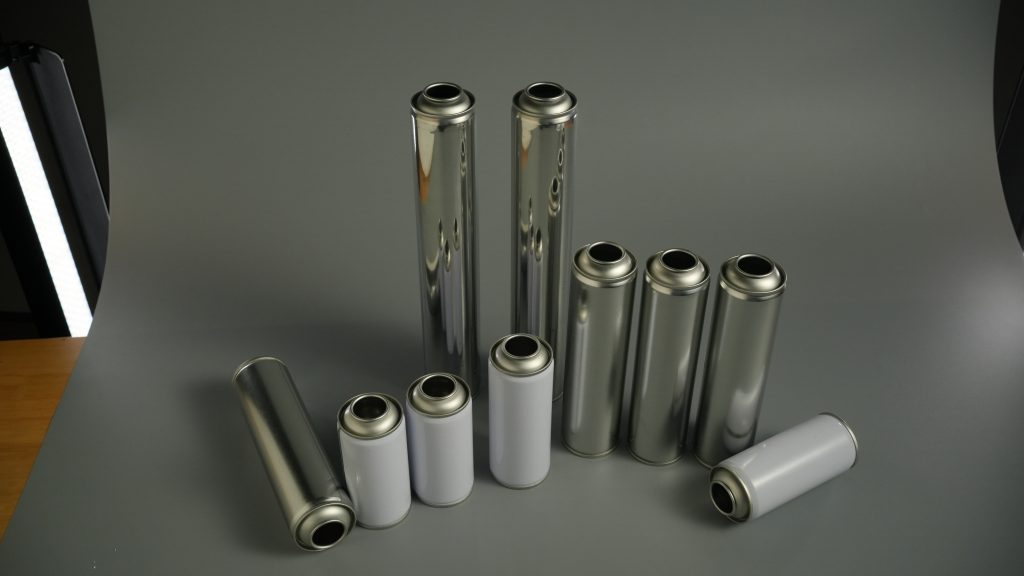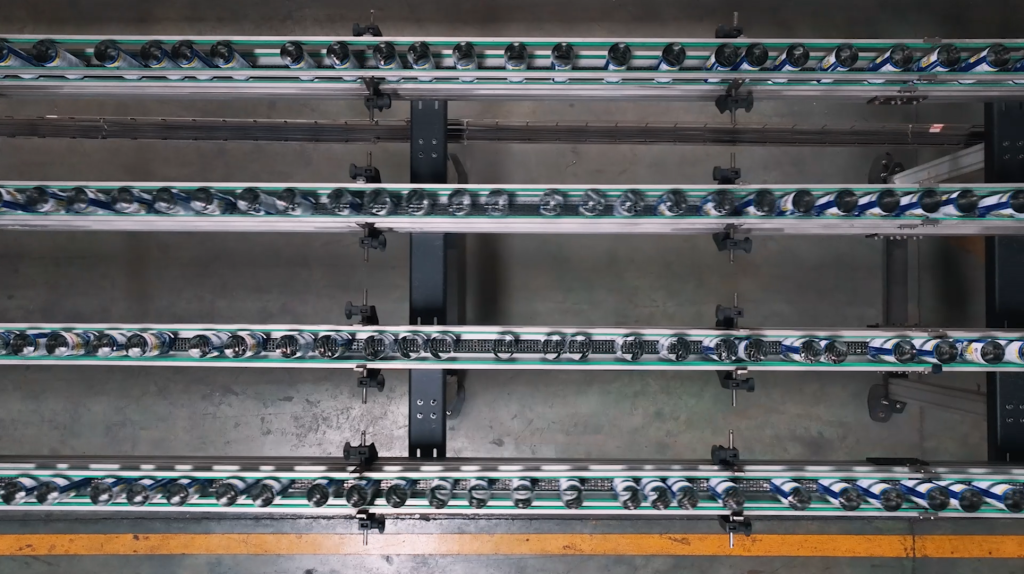
On a freezing winter camping trip in the mountains, a group of outdoor enthusiasts gathered around a portable stove to cook hot pot. Suddenly, someone knocked over a gas canister. A regular aluminum can dented immediately, with gas faintly leaking; but another custom tinplate canister nearby only had a shallow scratch. When screwed back onto the stove, the flame remained steady. This isn’t an accident—it’s the typical performance of custom tinplate butane canisters in outdoor scenarios, and the key reason more campers are ditching regular canisters.
Why Custom Tinplate Canisters Are Camping’s “Safety Guardians”?
The material properties of tinplate (electro-tinned steel sheets) make it naturally suitable for complex outdoor environments. We once customized a batch of butane canisters for an Arctic expedition team. The canisters used 0.25mm thick tinplate with a double-layer anti-corrosion coating inside. In -30℃ low temperatures, they maintained airtightness for 12 consecutive hours; while regular aluminum canisters tested at the same time had valve freezing issues after just 4 hours. More importantly, customized designs allow it to adapt to different needs:
| Performance Dimension | Custom Tinplate Canister (Meets ISO 9001) | Regular Aluminum Canister |
| Extreme Temperature Range | -40℃~80℃ | -20℃~60℃ |
| Drop Deformation Rate (1m drop) | <3% | >20% |
| Customization Scope | Capacity/Valve Interface/Printing/Safety Devices | Fixed Capacity Only |
| Shelf Life (Unopened) | 5 Years | 2-3 Years |

3 “Camping-Friendly” Advantages of Custom Tinplate Canisters
- Scenario-Specific Safety Customization:For family camping, we can add non-slip patterns and rounded edges to prevent kids from getting hurt. The 150g ultra-thin model customized for long-distance cycling campers is 15% lighter than aluminum cans of the same capacity, yet can withstand 1.8MPa pressure impact—easy to fit in a cycling bag.
- Branded Experience Upgrade:Last year, we customized canisters for an outdoor gear brand, printing national campsite maps and brand logos on the surface. They not only became user check-in props but also redirected to the brand’s mall via QR codes, indirectly boosting sales—an added value regular canisters can’t match.
- Better Long-Term Cost-Efficiency:Though the unit cost of custom tinplate canisters is 10% higher than aluminum ones, their recycling rate is 92% (vs. 75% for aluminum), and they can be refilled after passing re-inspection (by professional institutions). A campsite using our custom canisters reduced annual material costs by 8%.

4 Key Customization Questions Campers Ask
Q: “Will custom canisters affect efficiency, like slower gas output?”
A: Not at all. We customize valve diameters based on stove models. Last year, the canisters we made for a famous stove brand had a tested gas output of 120g/h—5% higher than the industry average, cutting boiling time by 2 minutes.
Q: “Can you customize for high-altitude use, as we need it for mountain climbing?”
A: Absolutely. We once made specialized canisters for a mountaineering team at 4,500m altitude. By thickening the can wall (0.3mm) and optimizing valve sealing, we solved leakage from pressure differences—no safety incidents reported yet.
Q: “Do custom canisters have full environmental certifications? We care about campsite protection.”
A: All our custom canisters meet EU REACH and China GB/T 25164 standards. We use biodegradable ink for printing, and they’re 100% recyclable after use. Last year, we even won the “Outdoor Industry Environmental Product Award”.
3 Key Considerations When Choosing Custom Canisters
- Prioritize Scenario Adaptation:Choose 100-200g for one-day camping, 500g+ for multi-day group trips, and mark “for extreme environments” for high-altitude/cold areas.
- Never Skip Safety Certifications:Confirm pressure test reports (≥2.0MPa burst pressure) and anti-leakage certificates.
- Clarify After-Sales Support:Reliable manufacturers offer “leakage replacement” services. We also provide 3-year quality traceability—scan the QR code to check production batches and test data.
Safety & Maintenance Tips
During rainy-season camping, stick anti-slip silicone pads on the canister bottom (we can pre-install them). Before long-term storage, use up remaining gas, wipe the canister with a dry cloth, and store in a cool, dry place. A customer who followed this method stored our custom canisters for 3 years—no rust when opened.
For campers, gas canisters aren’t just fuel containers—they’re safety lines. Custom tinplate butane canisters turn “risks” into “peace of mind” with material advantages and personalized design, letting you enjoy outdoor cooking without worries.


